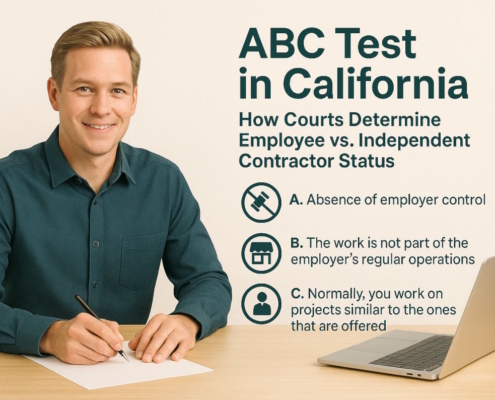Overview
Accidents happen, and accidents at work are no exception if you have been injured while in the course of your employment, you may be entitled to worker’s compensation. Dealing with any injury is difficult, but when it causes you to lose your job, it adds extra stress. An employee might file a worker’s compensation claim if that injury occurred while working. However, they do not have to settle for just money, especially if they can still work, just not in the same position. Job displacement benefits allow the employee to return to school and return on their feet. Further, it entitled the employee to work again and provide for themself.
What is a worker’s compensation claim?
A worker’s compensation claim is an administrative pleading filed with the employer. It differs from other types of claims because the purpose or goal is for the employee to be compensated quickly. This thought process arises because there are likely medical bills piling high and times the employee cannot work. Further, an employee may even suffer an injury so harshly they are permanently hurt and cannot return to their position.
However, not all employers fall under this availability or remedy. For worker’s compensation to apply, the employer must have the following:
- Insurance
- The injury occurred during normal business
- It must be understood this is the exclusive remedy (cannot file then sue the employer personally) and
- The fault of the injury does not matter as long as it was not done maliciously or willfully (an employee set up a way to be injured and fell to receive benefits, or an employer pushed an employee purposefully off a ladder).
Companies that are sued are often represented by an employment defense attorney.
Different types of recovery
If your employer meets the above requirements, you may be entitled to different types of compensation. These include medical treatment benefits, permanent disability, temporary disability benefits, and supplemental job displacement. This article will focus on the last option, supplemental job displacement. Regardless of the compensation program chosen, if a worker’s compensation claim is filed, it is important to remedy this is the sole remedy the employee can use to recover.
Job displacement benefits
Job Displacement Benefits allow the injured employee to return to school and get an education for another job position. This arises when an employee is permanently disabled but can work in another position or industry. If this path is taken, the employee is deemed compensated and cannot further sue the employer.
To recover under this program, the employee must meet a few requirements set out by the labor code, depending on when the injury occurred. First, for injuries occurring before 1992, an employee can recover depending on the percentage of disability and number of weeks payment will be given. Employees whose injuries occurred between 2004 and 2012 are subject to another calculation based on the percentage of disability and the number of weeks payment will be given. An employee must show the following:
- Injury caused permanent partial disability;
- The employer did not give or offer alternative work within 30 days of termination and
- The injured employee does not return to work within 60 days of termination.
What is a permanent partial disability?
It may be confusing to understand what a permanent partial disability is given the fact that a permanent disability is one that never goes away, so how can someone still work? A court will look to see whether the disability has reached its best point meaning no matter how much effort or medical treatment is given, the injury will not get better within a year.
In contrast, partial is defined under the law as an injury that does not render the employee fully disabled. An example would be losing sight in one eye or not being able to use a hand full but with some movement.
If these are met, the employee has taken their first step to receiving job displacement benefits.
Alternative work
Alternative work is similar to the previous position the employee engaged in. The employee must still make 85% of their previous job for this to be viable. The employer may also offer to modify the employee’s work. This would entail changing the employee’s office location or giving them a long time to recover/finish projects. The employee would keep the same job, but the employer would work with the employee to meet the demands required by the disability.
If the employer never gave this option to the employee within 30 days, then the employee has met the second requirement for the job displacement benefits program. The last requirement is straightforward: employees must not return to their position within 60 days of termination.
If all the above are met, the employee may be able to recover under the job displacement benefits program of worker’s compensation.































